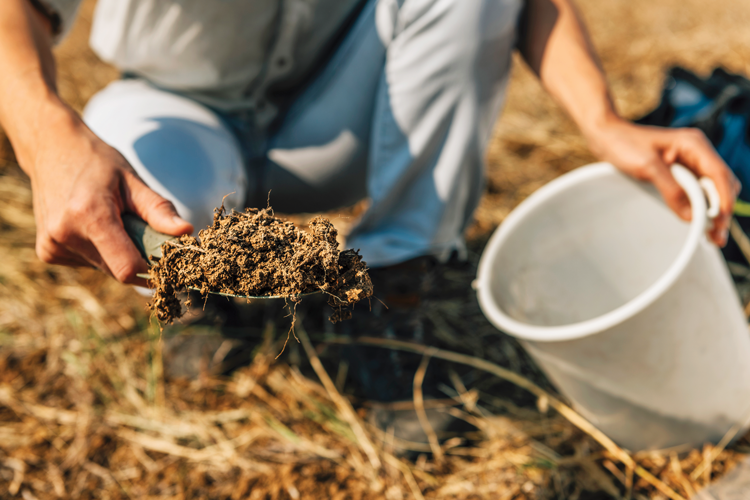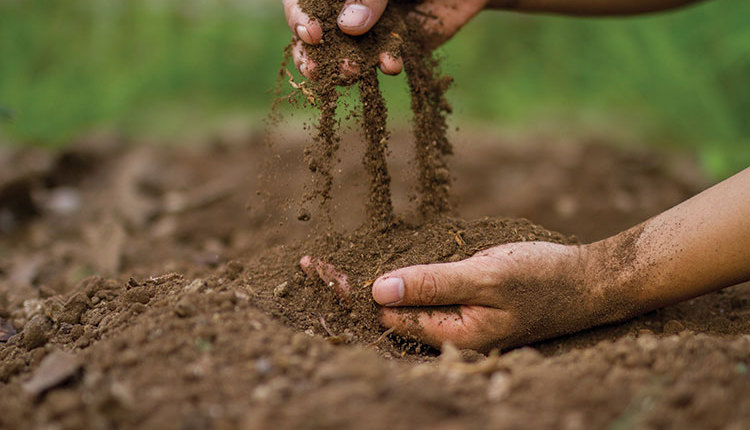
There are about two million farms in the United States according to the USDA. Each of these farms has a need for all types of agricultural testing, but soil testing is the tried and true analysis used on almost every farm.
There is no official list of soil testing laboratories in the U.S., but Robert Miller of the American Laboratory Proficiency program estimates the total number of laboratories at 175. This number breaks down to 30 university laboratories and 145 commercial laboratories. It doesn’t take long to realize that commercial laboratories bear a tremendous load when it comes to providing quality, timely analysis services to two million farms.
While not every field is tested every year, just imagine the amount of soil being shipped around the country for analysis. Then take a moment to think about when all of this soil sampling generally occurs. After all, not many people would consider walking a field of 10-foot-tall corn with a backpack and a hand probe to collect soil samples before the fall rush. The majority of soil samples are pulled in the 60 days following harvest. Obviously, various crops and geography can spread this “fall rush” out to some degree, but the main window is still the months of September through December.
The typical routine
The goal of soil analysis has always been to determine a field’s response to added fertilizer. After all, without a soil test to back up decision making, you’re just guessing what amendments a field may need. In a manure system, this may look a little different. Soil tests are likely pulled to ensure overapplications are not occurring, particularly in phosphorus management.
Regardless of why the soil tests are pulled, the process is going to look the same:
1. The crop is harvested.
2. The sampler is notified.
3. The sampler completes the task.
4. The samples are shipped.
5. The samples are analyzed.
6. The sample results are evaluated.
7. The results are delivered to the grower.
8. Fertilizer is ordered.
9. Fertilizer is applied.
10. Finally, fall tillage and manure application can take place.
It seems simple when a phone call is all it takes to order soil sampling, but the entire process is all but simple. A lot of actions need to go off without a hitch to ensure all of this happens in a timely manner. A realistic time expectation is probably around two weeks to complete all 10 steps. But it doesn’t have to be this way!
What if the soil sampling timeline could look drastically different? What if we could make the process take three months instead of two weeks? What if taking longer was more efficient?
All of this and more could be yours with a transition to spring soil sampling.
The gift of spring
It sounds like a late-night infomercial, but this plan does actually work! A transition to spring sampling isn’t delaying all of the fall sampling needs until the next spring. It’s actually quite the opposite. It’s moving up next fall’s to-do list to the spring of the year.
Soil samples can be pulled any time from when the ground is conditioned for planting up until the crop is too tall to facilitate sampling. For the majority of crops, in most locations, this allows for a month or more of time to pull samples. Then, all the logistics associated with a soil sampling event can take place during the growing season and don’t have to be performed the instant the results hit your inbox.
The next gift is one that may mean the most: the gift of money. Fertilizer prices fluctuate throughout the year. Capitalizing on these price fluctuations offers tremendous opportunities to a grower that has a plan. The problem is, most of these seasonal low prices occur during the growing season. If updated soil tests are not pulled, an accurate picture of fertilizer demand cannot be established. If samples are pulled in spring, fall fertilizer demands are already established during the growing season and you can jump on a late summer price break with confidence.
The final gift from spring sampling is the gift of freedom. Freedom from the pressure to get everything done as fast as humanly possible in the fall. Freedom from the race against rain, snow, and freezing temperatures in the fall.
There is also freedom from regulation. Regulation on all of agriculture, especially large-scale animal agriculture, is constantly increasing. If a soil sampling event gets missed in the spring, there is another opportunity to pull the samples prior to the winter nutrient management planning season. But if a fall soil sample gets missed, Nutrient Management Plans (NMPs) must be submitted to the governing agencies with missing and/or out-of-date soil samples. These violations of nutrient management law sully the name of both the planner and the farm for a relatively minor infraction. Attempting to pull soil samples in the one small window after harvest, and prior to tillage or manure application, doesn’t set the nutrient management team up for success.
Tailor the plan
Farming is unpredictable enough. A change in soil sampling should be easy and fit into the long-term plan if it’s going to be successful. Most management changes associated with moving fall sampling up to spring are associated with a gradual transition. The easiest crops to adjust the sampling timeline for are forages, as most have several harvest windows. Sampling after second or third crop hay moves the sampling process up from fall harvest or winter dormancy. It is highly likely that when these forage fields are due for retest, they will be in an annual crop. This group of fields can then be transitioned all the way to spring when due for retesting.
Another set of fields that are very easily moved to spring are late-harvest fields. A few quality candidates for bumping up to spring are corn fields harvested for grain, forage crops following wheat, or fields that were late planted in spring after harvesting rye. These fields are ideal for transitioning quickly, as every single day matters when a grower is up against winter weather. The late harvest creates an even greater sense of urgency when it comes to timing, especially if manure is going to be applied to these fields. Sampling late-harvest fields the preceding spring allows for unencumbered timing of yearly farming practices.
Soil sampling isn’t as exciting as chopping silage or as vital as applying manure, but it carries major weight in an operation’s overall success. Therefore, for soil sampling to be successful, there has to be a plan.
When growers sit down to develop a crop plan, soil sampling should be part of the discussion. Establish which fields are due for soil test updates and which fields may need testing beyond the norm, such as a higher quantity of samples or more frequent testing. This is the perfect time to establish which fields would be good candidates for a shift to spring sampling.
Doing something different than the crowd will always feel a little risky at first. But the jump forward to spring soil sampling carries zero risk. It’s actually quite the opposite. There is a tremendous amount of opportunity associated with the change.
Take a step back and see if your operation could benefit from more time, more money, and less regulation. When you evaluate how you could incorporate this change in timing into your operation, the choice may be easy.
This article appeared in the February 2024 issue of Journal of Nutrient Management on pages 12-13. Not a subscriber? Click to get the print magazine.









